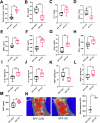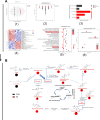Hypertension inhibition by Dubosiella newyorkensis via reducing pentosidine synthesis
- PMID: 39987250
- PMCID: PMC11846869
- DOI: 10.1038/s41522-025-00645-6
Hypertension inhibition by Dubosiella newyorkensis via reducing pentosidine synthesis
Abstract
Gut dysbiosis has been associated with hypertension. Herein, we aimed to discover the potential association between gut microbiota and high-salt diet (HSD) induced endothelial dysfunction in conventional hypertensive mice. Dubosiella newyorkensis was found highly sensitive to salt in HSD-induced hypertension. The salt-sensitive nature of Dubosiella newyorkensis was confirmed by bacteria culture in vitro. Oral Dubosiella newyorkensis in HSD-induced hypertensive mice decreased blood pressure, inhibited activation of vascular endothelium, attenuated inflammation and alleviated intestinal vascular barrier injury. Similar effects of Dubosiella newyorkensis were observed in germ-free mice. Interestingly, serum pentosidine was found to function as a biomarker for Dubosiella newyorkensis in response to HSD in both metabolic modes. Supplement of pentosidine, deteriorated hypertension and vascular endothelial damage. Differential genes enriched in the glycerophospholipid metabolism were markedly altered in cultured bacteria. Our study has identified Dubosiella newyorkensis as a new salt-sensitive gut microbe that inhibits pentosidine production thereby alleviating hypertension.
© 2025. The Author(s).
Conflict of interest statement
Competing interests: The authors declare no competing interests.
Figures








References
-
- He, F. J., Campbell, N., Woodward, M. & MacGregor, G. A. Salt reduction to prevent hypertension: the reasons of the controversy. Eur. Heart J.42, 2501–2505 (2021). - PubMed
-
- O’Donnell, M. et al. Salt and cardiovascular disease: insufficient evidence to recommend low sodium intake. Eur. Heart J.41, 3363–3373 (2020). - PubMed
MeSH terms
Substances
LinkOut - more resources
Full Text Sources
Medical
Molecular Biology Databases

